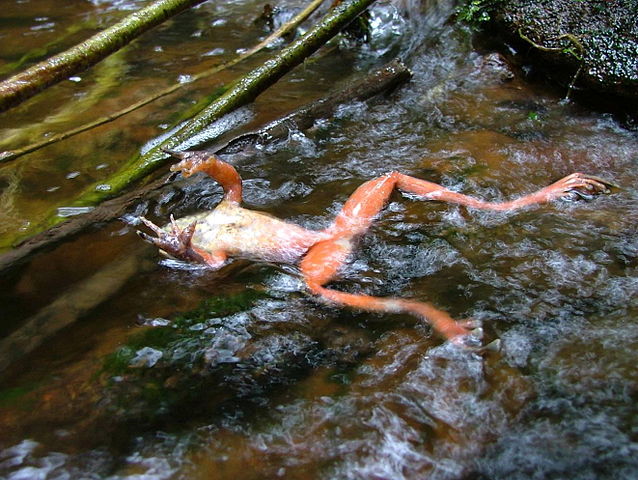By Simon Knutsson
First published: March 27, 2017
On August 25, 2016, Benny Andersson, Executive Director of Animal Rights Sweden (Djurens Rätt, DR), and I met to discuss how DR can measure its impact and advocate for animals more effectively. Below are my feedback to DR and related thoughts, which I wrote shortly after the meeting. DR approved of me publishing this text, but does not necessarily agree with anything I write below.
All sentient beings
 DR states that it aims to end oppression of animals, such as painful experimentation, and reach a world where animals are respected as sentient individuals with right to their lives. The focus is on harms caused by humans. I would broaden the goal so that it includes suffering among all sentient beings, including wild animals, regardless of whether the harm is caused by humans. It feels as bad for an animal to suffer whether the suffering is caused by humans or a disease.
DR states that it aims to end oppression of animals, such as painful experimentation, and reach a world where animals are respected as sentient individuals with right to their lives. The focus is on harms caused by humans. I would broaden the goal so that it includes suffering among all sentient beings, including wild animals, regardless of whether the harm is caused by humans. It feels as bad for an animal to suffer whether the suffering is caused by humans or a disease.
What most effectively ends the use of animals may not be best all things considered. For example, arguing that eating animals is bad for the environment may reduce the number of animals eaten by humans, which is good, but it may also unfortunately spread an opposition to interventions in nature to reduce suffering among individual wild animals. Moreover, advocating for, say, veganism using antispeciesist arguments instead of environmentalist arguments plausibly has the positive effect that, in addition to spreading veganism, more people will care about individual wild animals.
Even if the scope is broadened as I suggest, DR could still, in practice, focus on stopping harms caused by humans, but it is important to also consider the broader indirect effects of one’s animal advocacy.
Confrontation
There seems to be room in Sweden for more peaceful confrontational tactics, such as protests, sit-ins, perhaps shaming, and other public actions that disrupt common practices. DR is fairly non-confrontational, and Swedes tend to avoid confrontation. This confrontational work should perhaps be done separately from DR, to leave DR’s moderate brand intact. For example, some could start a Swedish chapter of Direct Action Everywhere (after talking to DxE).
Activists and public actions
In 2009 and 2014, DR commissioned polls to track the number of self-described vegetarians or vegans, but more interesting is probably to track the number of activists and the public actions they take. DR publishes how many members there are, but that is different from the number of people taking public action. Creating activists seems more important than creating vegans.
Impact report overall
I read DR’s latest impact report (Effektrapport 2015). It was informative and discussed both successes and challenges, and DR should get praise for publishing it. I will next look closer at a part of the report that deals with seal trade.
Seal trade
The impact report lists as a success a continued and strengthened EU ban on seal trade. This work by DR did not take up many resources according to Benny so it does not say much about DR’s overall effectiveness, but I discuss it to illustrate questions that I would ask about these kinds of initiatives. According to the report, a ban existed but Canada and Norway objected to it through WTO. DR tried to influence Sweden’s Government and members of the European Parliament, and in 2015 it was announced that the ban stays in place and is strengthened.
What would have happened if seal trade became allowed? Benny explained that the main product that would be imported to the EU would be seal skin, and less important could be that seal may replace some of the fish in Omega-3 supplements. Regarding the supplements, one would need to ask if it would be worse if seal was used in supplements instead of fish. Regarding seal skin, one would need to consider whether humans would buy seal skin instead of skin from other animals, and if so, whether buying the seal skin is worse. Benny replied that the most important effect is to keep the ban as a precedent for WTO policy to help future limitations to trade of other animal products. That’s interesting and raises new questions: How important is it that this particular precedent continued to be in place? I understood from Benny that the ban was primarily continued for business reasons, and not out of concern for animals, and I guess that there are many more such trade restrictions on animal products. Without having more information, I think it would have been more effective for DR to have done something else, partly because a ban on trade of the skin from a particular animal does not clearly decrease the overall consumption of skin.
Thanks to Gustav Alexandrie, Maria Bergström and Alva Winsa for arranging the meeting, to Benny for the meeting, and to DR for approving the publication of this text.